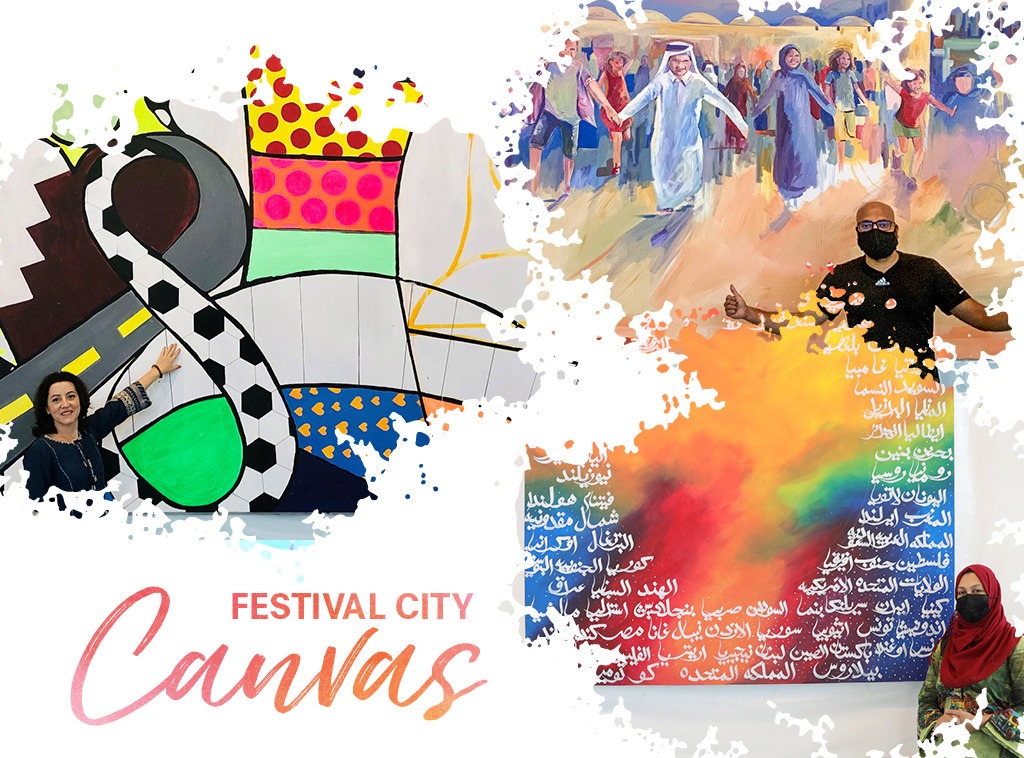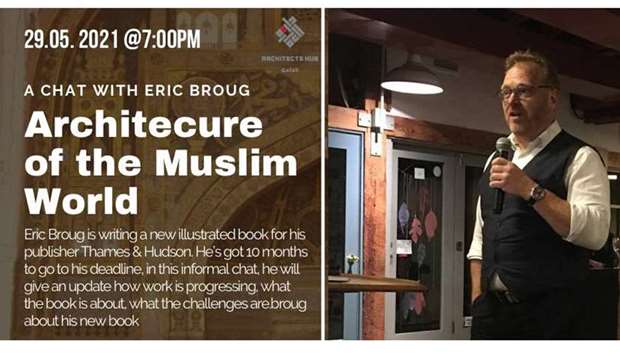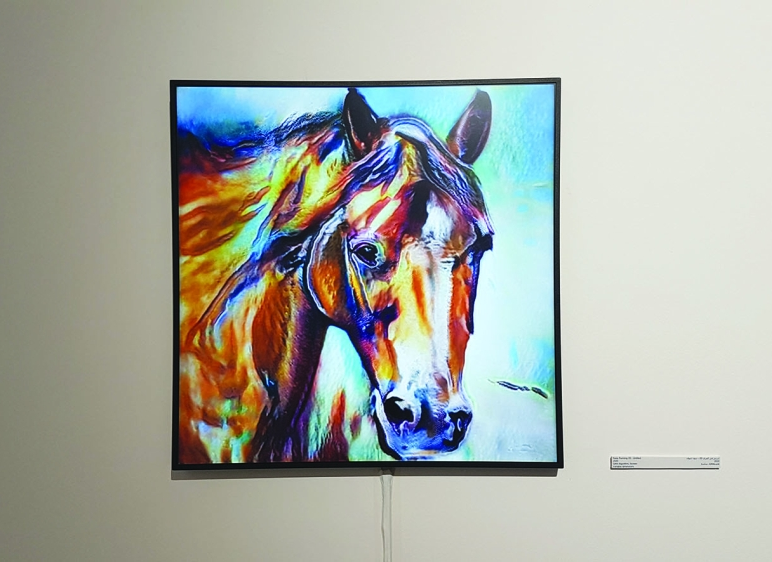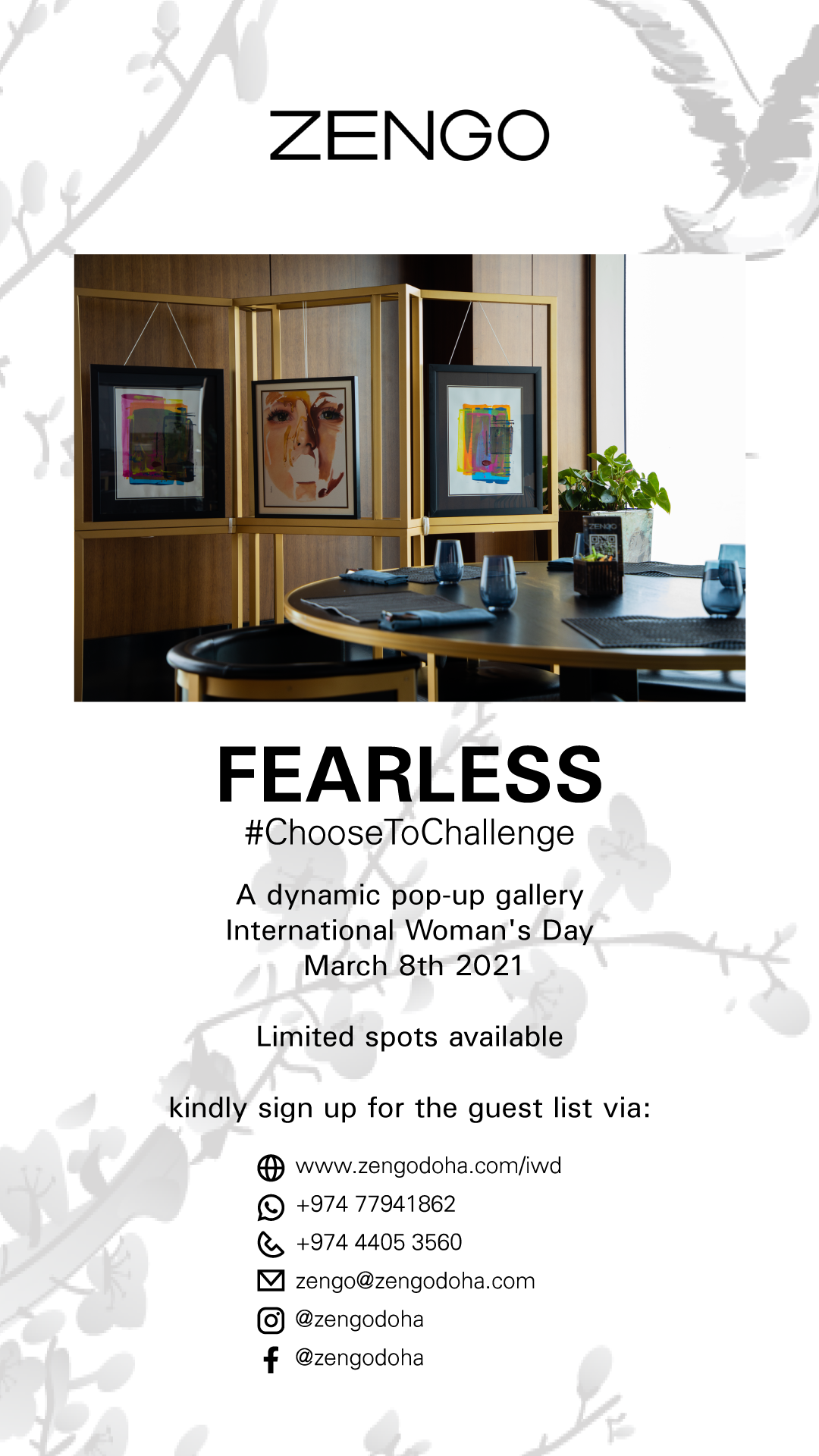Doha, Qatar, 27 March 2019 – Under the patronage of His Highness Sheikh Tamim bin Hamad bin Khalifa Al Thani, Qatar Museums will open the National Museum of Qatar (NMoQ) to the public on 28 March 2019, welcoming the world to an unparalleled immersive experience housed in a new architectural masterpiece by Jean Nouvel.
The Museum’s winding, 1.5-kilometer gallery path is a journey through a series of unique, encompassing environments, each of which tells its part of the story of Qatar through a special combination of architectural space, music, poetry, oral histories, evocative aromas, archaeological and heritage objects, commissioned artworks, monumentally-scaled art films, and more. Together, the eleven permanent galleries take visitors from the formation of the Qatar peninsula millions of years ago to the nation’s exciting and diverse present. Giving voice to the nation’s rich heritage and culture and expressing the aspirations of its people, NMoQ will serve as a hub for discovery, creativity, and community engagement, providing diverse educational opportunities for Qatar and advancing the nation’s cultural vision on the global stage.

The spectacular 52,000-square-meter (560,000-square-foot) NMoQ embraces as its centerpiece the restored historic Palace of Sheikh Abdullah bin Jassim Al Thani (1880-1957), son of the founder of modern Qatar. A building that in former times was both the home of the Royal Family and the seat of government, and was subsequently the site of the original National Museum, the historic Palace is now the culminating exhibit in the sweeping succession of gallery experiences.
Her Excellency Sheikha Al Mayassa bint Hamad bin Khalifa Al Thani, Chairperson of Qatar Museums, said, “The opening of the National Museum of Qatar is a source of immense pride for our country, and an exceptional moment for engaging with people from around the world. The extraordinary schedule of inaugural activities draws together outstanding artists, architects, thinkers, and cultural leaders from Qatar and the international community, vividly demonstrating how the National Museum of Qatar will always be a dynamic resource in its programs as well as its exhibitions. Culture connects people, and with this new museum we believe we have created an exceptional platform for dialogue.”
Sheikha Amna bint Abdulaziz bin Jassim Al Thani, Director of the National Museum of Qatar, said, “After more than a decade of planning, we are deeply gratified to welcome the people of Qatar and our international visitors to this exciting, multi-layered, experiential museum. From the start, Qatar Museums and the National Museum team knew that we wanted to create a living experience for our people—a museum with a heart. We have created galleries full of movement, sound, and color in order to engage our public fully, with their senses and emotions as well as their intellects, and have assembled creative and authentic content that is so rich that people will discover something new with each visit. It is now time for the discoveries to begin.”

In designing the building that makes these experiences possible, Jean Nouvel drew inspiration from the desert rose, a flower-like formation that occurs naturally in the Gulf region when minerals crystallize in the crumbly soil just below the surface of a shallow salt basin. Described by Nouvel as “the first architectural structure that nature itself creates,” the desert rose became the model for the Museum’s complex structure of large interlocking disks of different diameters and curvatures—some vertical and constituting supports, others horizontal and resting on other disks—which surround the historic Palace like a necklace. A central court, the Baraha, sits within the ring of galleries and serves as a gathering space for outdoor cultural events. On the outside, the Museum’s sand-colored concrete harmonizes with the desert environment, so that the building appears to grow out of the ground and be one with it. Inside, the structure of interlocking disks continues, creating an extraordinary variety of irregularly shaped volumes.
Jean Nouvel said, “To imagine a desert rose as a basis for design was a very advanced idea, even a utopian one. To construct a building with great curved disks, intersections, and cantilevered angles—the kind of shapes made by a desert rose—we had to meet enormous technical challenges. This building is at the cutting edge of technology, like Qatar itself. As a result, it is a total object: an experience that is at once architectural, spatial, and sensory, with spaces inside that exist nowhere else.”
The cantilevered disks, which provide natural shade, are among the elements of the design that have enabled NMoQ to become the first museum to receive both LEED Gold certification and a four-star sustainability rating from the Global Sustainability Assessment System.
The National Museum of Qatar will be officially inaugurated by His Highness the Amir, Sheikh Tamim bin Hamad Al Thani, in an opening celebration attended by heads of state, dignitaries, and museum leaders from around the world on the evening of 27 March 2019.
Telling the Story of Qatar Through Encompassing Experiences
NMoQ is organized in three chapters—“Beginnings,” “Life in Qatar,” and “The Modern History of Qatar”— presented in eleven galleries, which take visitors from the geological period long before the peninsula was inhabited through to the present day. Passing through the galleries, visitors are caught up in the experience of the formation of the Qatar peninsula and its natural habitat, the heritage of life in Al Barr (the desert) and on the coast, the political development of modern Qatar, the discovery of oil, and Qatar’s multifaceted relationships today with the larger world.
Oral history films, archival photographs, maps, texts, models, and digital learning stations establish the narrative, along with some of the most dazzling treasures of Qatar’s history and heritage. Surrounding the objects and bringing the experience to life is a sequence of short art films that NMoQ commissioned from a roster of distinguished international filmmakers. The films are projected at immense scale and with hypnotic clarity against the walls of the galleries, with each one uniquely suited to the dynamically curving, irregular shape. With their towering size, the films seem to make the walls dissolve into moving spectacles. All films were produced by the Doha Film Institute using cutting-edge technologies and were shot within the borders of Qatar.
The galleries:
- “The Formation of Qatar” incorporates a display of fossils of plants and animals that represent seven time periods of Qatar in the distant past. A film made under the creative direction of Christophe Cheysson (The Beginnings, 2018) encircles the viewer with images of the formation of the peninsula and early life-forms, while digital displays bring to life long-extinct plants and animals and now-vanished landscapes.
- “Qatar’s Natural Environments” features models and exhibits about indigenous plants and animals from the Arabian oryx, the sand cat, and the deathstalker scorpion to the largest of all fish, the nine-meter-long whale shark. In a kaleidoscopic film experience by director Christophe Cheysson and legendary filmmaker Jacques Perrin (Land and Sea, 2017), birds fill a sky 50 meters wide, schools of fish swim through the deep, and a windstorm dazzles the senses.
- “The Archaeology of Qatar” incorporates displays of some 1,000 archaeological artifacts, from luxury items to functional everyday objects, which trace life on the peninsula from the earliest human presence thousands of years ago to the thriving towns of the 1800s. A film by Jananne Al-Ani (Archaeology, 2017) brings Qatar’s archaeological sites into the gallery, combining aerial views with compelling close-up images of objects from pre-historic times into the Bronze Age and beyond.
- “The People of Qatar” begins with an exploration of movement as a fundamental element in the identity of the Qatari people: seasonal movement between al barr (the inland desert) and the coast; movement to find water and pastures, and movement to buy and sell goods. The gallery is organized around a three-dimensional sculpture of the peninsula and tells the story of how survival depended for centuries on a nomadic way of life. Objects in the gallery include elaborate camel saddles, leather water bags, and an array of artifacts rescued from the wreck of the Cirebon, a trading vessel that sank 1,000 years ago off the Indonesian coast. The faces and voices of Qatar’s people enter the gallery, recounting their experiences of living in this land, through a specially commissioned oral history film by Jon Kane.
- “Life in Al Barr (Desert)” brings to life the challenges, joys, and satisfactions of living in the inland desert. The gallery includes a complete bait al-sha’r (tent), displays of sadu weaving, and clusters of cooking utensils, surrounded by sounds of poetry being recited and the aroma of coffee. A sweeping film by Abderrahmane Sissako (Life in Al Barr, 2017), shot in beautiful silver-nitrate style, unfolds on the long walls of the gallery, taking the viewer through the daily cycle of life.
- “Life on the Coast” features a large-scale model of the important center for trade and pearling Al Zubarah, one of the largest and best-preserved coastal cities in the Arabian Gulf, and Qatar’s first UNESCO World Heritage Site listing. Capturing the rhythms of life during the heyday of Al Zubarah is another film by Abderrahmane Sissako (Al Zubarah, 2017), which is projected on a six-screen backdrop that wraps around the model of the site. A second film, by Mira Nair (Nafas/Breathe, 2014), is presented on two facing screens, each approximately 31 meters long, immersing viewers in the physical and emotional hardships of pearling. A second oral history film by John Kane completes the experience.
- “Pearls and Celebrations” includes a sparkling display of jewelry, costumes, and other rare and splendid objects, which testify to the role of the pearling industry for many years as Qatar’s main link with the world. Among these is one of Qatar’s greatest national treasures, the renowned Pearl Carpet of Baroda, commissioned in 1865 and embroidered with more than 1.5 million of the highest quality Gulf pearls, along with emeralds, diamonds, and sapphires.
- “The Modern History of Qatar” is told through a series of interlinked spaces, the first of which covers the years 1500 to 1913 and presents historic figures from Rahmah bin Jaber and Isa bin Tarif to the leaders under whom Qatar emerged as a united nation, Sheikh Mohammed bin Thani and Sheikh Jassim bin Mohammed bin Thani. Exhibits enable visitors to delve into this past by accessing archival documents, historic maps, and more, and a film by Peter Webber (Shadows of History, 2018) poetically evokes the moments before the decisive battle for unification.
- A second space focuses on the transitional moment between 1913 and 1972, under the reigns of Sheikh Abdullah bin Jassim Al Thani, Sheikh Ali bin Abdullah Al Thani and Sheikh Ahmad bin Ali Al Thani, from the collapse of the pearling industry to the discovery of oil. Suddenly, a desert country with few inhabitants became a nation that attracted people from around the world. An impressionistic 360-degree film installation by world-renowned video artist Doug Aitken (The Coming of Oil, 2017) evokes the beauty and impact of the discovery of oil.
- A third space, telling the story from 1972 to 2013 under the reigns of Sheikh Khalifa Bin Hamad Al Thani and the Father Amir, His Highness Sheikh Hamad bin Khalifa Al Thani, has at its center a 5 metre-diameter wooden model of the city of Doha and features a multi-user interactive wall that enables visitors to explore archival images related to the country’s development over these years. This was the period when revenues from oil and liquefied natural gas (LNG) made possible a dramatic transformation, including massive urban development. The gallery also features an oral history film about the Father Amir, directed by Tala Hadid, Rowdha Al Thani, and Amal Al Thani, and a major video art installation by John Sanborn (Alchemy, 2016): a creative presentation of the significance of LNG, playing on 30 high-resolution monitors of varying sizes.
- “Qatar Today,” a gallery near the conclusion of the permanent gallery route, will showcase the achievements of the reign of the current Amir and recent history including the blockade imposed in Qatar in June 2017, which brought unprecedented challenges to the country and its people. Through a striking immersive digital installation, the gallery – which will open as part of a second phase of development of the National Museum of Qatar – dynamically represents these events.
The permanent gallery route culminates in the very heart of Qatari national identity, the restored Palace of Sheikh Abdullah bin Jassim Al Thani. Built in 1906, this palace is significant as a national symbol and is one of the best-loved Qatar landmarks. Following a painstaking restoration project over a period of more than three years, it now forms the final highlight of a visit to the National Museum of Qatar.
The creation of these experiences began more than a decade ago and involved convening a series of more than a dozen meetings with members of the public, at which NMoQ invited hundreds of Qataris to share whatever stories and materials they might care to offer and asked what they most wanted to see and hear in their national museum. In a separate but related initiative, the NMoQ team also conducted more than 500 on-camera oral history interviews. Out of these interactions came a richness of information that became the essence of the new institution. In-depth discussions with local and international experts from a wide range of disciplines helped map out the themes that emerged in the exhibition plan.
Making Doha: 1950-2030
To inaugurate its temporary exhibition gallery, the new National Museum of Qatar will present an exploration of the ongoing urban and architectural development of the capital city, Making Doha 1950-2030, on view from 28 March through 30 August 2019.
Curated by Rem Koolhaas and Samir Bantal of OMA/AMO and Fatma Al Sehlawi and the Qatar based research team from Atlas Bookstore, and designed by a team from OMA/AMO, Making Doha 1950-2030 brings together seventy years of photographs, models, plans, texts, films, oral histories, and archival materials to chart Doha’s transition from organic growth to more modern and deliberate planning practices. This exhibition examines how the city of Doha was assembled and how its construction affected the global discipline of architecture, in a story told in across four major chapters: Seeds of a Nation (1950–1971), Modern State (1971–1995), And the World (1995–2010), and Destination Qatar (2010–2030).
The floorplan of the exhibition is designed as a timeline, with key moments punctuating the visitors’ passage along the narrative. A 115-meter-long curtain printed with historical collages lines the edge of the space.
Making Doha 1950-2030 has been organized under the supervision of Sheikha Reem Al Thani, Director of Exhibitions at Qatar Museums, and Sheikha Amna bint Abulaziz bin Khalifa Al Thani, Director of the National Museum of Qatar. The research team from Atlas Bookstore that developed the exhibition content was Marsya Abdulghani, Nasser Al Armadi, Fatima Al Hajri, Majid Al Remaihi, Alanood Al Thani, Rawda Al Thani, Ahmed Alony, and Markus Elblaus.
Site-Specific Commissioned Artworks
Adding another layer of emotion and imagination to the experience, NMoQ has also commissioned local, regional, and international artists to create new works, installed both inside the building and outside on the expansive grounds. HE Sheikha Al Mayassa bint Hamad bin Khalifa Al Thani, Chairperson of Qatar Museums, guided the selection of the commissions.
A sculpture by the Lebanese artist Simone Fattal, Gates of the Sea, inspired by the ancient petroglyphs found at Al Jassasiya, is installed on the walkway toward the museum’s entrance. Welcoming visitors immediately inside the building is a wall installation by Qatari artist Ali Hassan, Wisdom of a Nation, whose geometric design draws on the image of the Qatari flag and an excerpt from a poem by the founder of modern-day Qatar, Sheikh Jassim bin Muhammad Al Thani. Standing at the entrance to the permanent galleries is a large-scale sculpture by Qatari artist Hassan bin Mohammed Al Thani, Motherland, evoking the connections between the desert, the sea, and the women of Qatar.
Flag of Glory by the Iraqi artist Ahmed Al Bahrani is a sculpture of diverse hands united in holding up the flag of Qatar, and is located in the Baraha, or central court, that sits within the ring of gallery spaces and envelopes the Palace of Sheikh Abdullah. A sculptural group by French artist Roch Vandromme, On Their Way, comprises the figures of four camels, evoking Qatar’s long history of nomadic lifestyle and trade, and is located next to the Palace of Sheikh Abdullah bin Jassim.
Finally, on the 900-meter-long lagoon that is a key feature of the landscaped park surrounding the Museum, visitors will find the largest installation ever conceived by French artist Jean-Michel Othoniel. Titled ALFA, it comprises 114 individual black fountains, shaped to resemble Arabic calligraphy or the tall reeds that calligraphers use to make their pens. The fountains are activated once an hour.
Education and Community Engagement
The 112,000-square-meter (28-acre) public park designed by landscape architect Michel Desvignes that surrounds the Museum features family-friendly interactive learning environments, walkways, and a lagoon and is landscaped exclusively with drought-resistant native vegetation. In the outdoor areas, children can learn through play and exploration, discovering crucial aspects of life in Qatar in an echo of what they learn in the Museum itself.
The main galleries incorporate six learning spaces featuring a range of interactive exhibits designed to appeal to people of different ages. In these learning spaces, visitors may discover the distinctive features of Qatar’s natural flora and fauna, role play about archaeological exploration, learn about the methods Qataris used to find their way during seasonal migrations and at sea, experience the rhythms of a traditional family in the desert, take on roles in reliving life on a pearling boat, and discover the many facets of an economy based on energy production.
The Museum will also offer a wide range of activities for the entire community. These include spaces that host educational and cultural activities such as workshops, competitions, and lessons on arts education, and other activities for all ages, but especially school students. Educating the public about topics related to culture and history that complement the national curriculum is a major focus for the National Museum of Qatar.
Restaurants and Hospitality
The National Museum’s Café 875 overlooks the main lobby and serves contemporary Qatari cuisine. The Desert Rose café is located midway through the permanent galleries route, and the Jiwan Restaurant is located on the upper level, offering panoramic views of the sea. A 213-seat auditorium is located next to the main public lobby. Gift shops include resources for parents, teachers, and visitors, among them activity books, souvenirs, games, and books, as well as exquisite merchandise by Qatar’s finest designers.
No less than in the rest of the Museum, contemporary art is integral to these spaces dedicated to visitor hospitality. The main-lobby Café 875 incorporates Kan Ya Ma Kaan, a sculptural wall installation by Qatari artist Bouthayna Al Muftah. The work takes inspiration from traditional Qatari jewelry and “Thahab” or 875 gold (21 karat, containing 87.5% gold). The installation has been designed in the form of round protruding discs to merge with Jean Nouvel’s architecture. The members’ lounge incorporates a sculpture by the Qatari artist Aisha Nasser Al-Sowaidi, entitled Central Midkhan.
Gift Shops
The NMoQ offers two gift shops on the ground floor of the museum designed by Koichi Takada. The main shop offers a large collection of exclusive gifts, many of which draw their inspiration from the history, heritage, and culture of Qatar. Unique pieces by Qatari artists and designers are also offered. There is also a children’s gift shop that offers a diverse range of locally designed and inspired souvenirs and gift items including educational toys, books, puzzles, and games.
Visitor Information
Museum Park St, Doha, Qatar
Phone: +974 4452 5555 | http://nmoq.org.qa/
Opening weekend hours: 10:00 am to 9:00 pm Thursday; 1:30 to 7:00 pm Friday, 10:00 am to 7:00 pm Saturday.
Museum admission: Starting from March 28, admission to NMoQ, MIA and Mathaf will be charged at the entrance. General admission will be QAR 50 for adults; QAR 25 for students and free for children under 16, Culture Pass Plus and Culture Pass Family Members, and visitors with disabilities. Tickets will be free of charge for Qatari Nationals, as well as residents of the State of Qatar, with a valid Qatar ID. General admission tickets include exhibitions within the museum and are valid for three consecutive days from the date of first admission. Museum Pass is QAR 100 and permits admission to all museums and venues, valid for three consecutive days from the date of first admission. For full terms and conditions, visit: https://www.qm.org.qa/en/ticketing-terms-conditions.
ABOUT QATAR MUSEUMS:
Qatar Museums (QM) connects the museums, cultural institutions, and heritage sites in Qatar and creates the conditions for them to thrive and flourish. It provides a comprehensive organization for the development of museums and cultural projects, with a long-term ambition of creating a strong and sustainable cultural infrastructure for Qatar. Under the patronage of His Highness the Amir, Sheikh Tamim bin Hamad Al Thani, and led by its Chairperson, Her Excellency Sheikha Al Mayassa bint Hamad bin Khalifa Al Thani, QM is consolidating Qatar’s efforts to become a vibrant center for the arts, culture, and education in the Middle East and beyond.
Since its foundation in 2005, QM has overseen the development of the Museum of Islamic Art (MIA), Mathaf: Arab Museum of Modern Art, and the Al Zubarah World Heritage Site Visitor Centre. QM also manages the ALRIWAQ DOHA Exhibition Space and the Fire Station: Artists in Residence. Future projects include the 3-2-1 Qatar Olympic and Sports Museum.
QM is committed to instigating Qatar’s future generation of arts, heritage, and museum professionals. At its core is a commitment to nurturing artistic talent, creating opportunities and developing the skills to service Qatar’s emerging art economy. By means of a multi-faceted program and public art initiatives, QM seeks to push the boundaries of the traditional museum model and create cultural experiences that spill out onto the streets and seek to involve a wide audience. Through a strong emphasis on originating art and culture from within and fostering a spirit of national participation, QM is helping Qatar find its own distinctive voice in today’s global cultural debates.
FIND US ONLINE:
#QatarCreates
Qatar Museums
Twitter: @Qatar_Museums | Instagram: @Qatar_Museums | Facebook: @QatarMuseums
National Museum of Qatar
Twitter: @NMOQatar | Instagram: @NMOQatar | Facebook: @NMOQatar
MEDIA CONTACTS:
Rania Hussein, Qatar Museums: rhussein@qm.org.qa (+974 4402 8535)
Federica Zuccarini, Qatar Museums: fzuccarini@qm.org.qa (+974 4402 8510)
More from Arts & Culture






Leave A Comment
You must be logged in to post a comment.